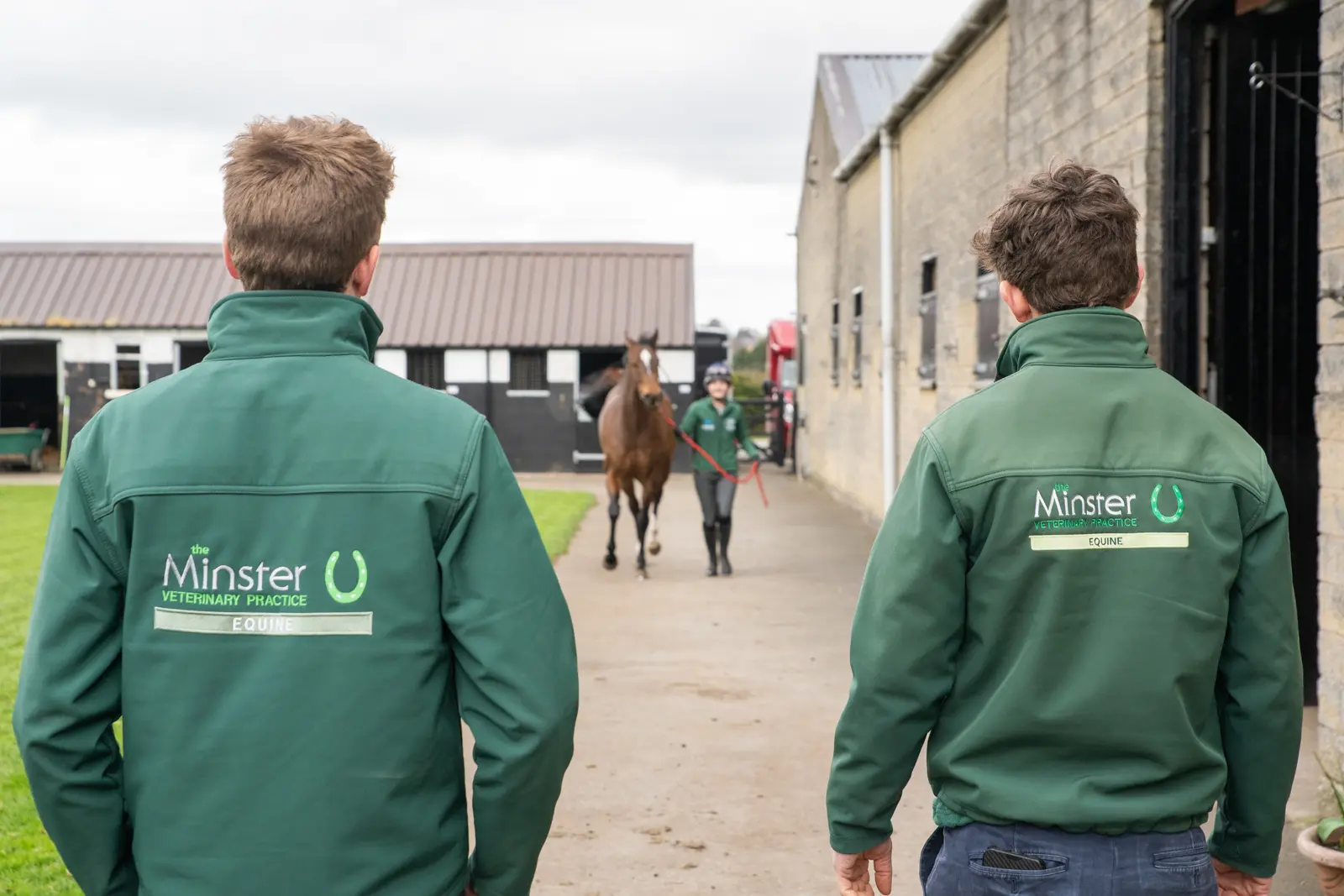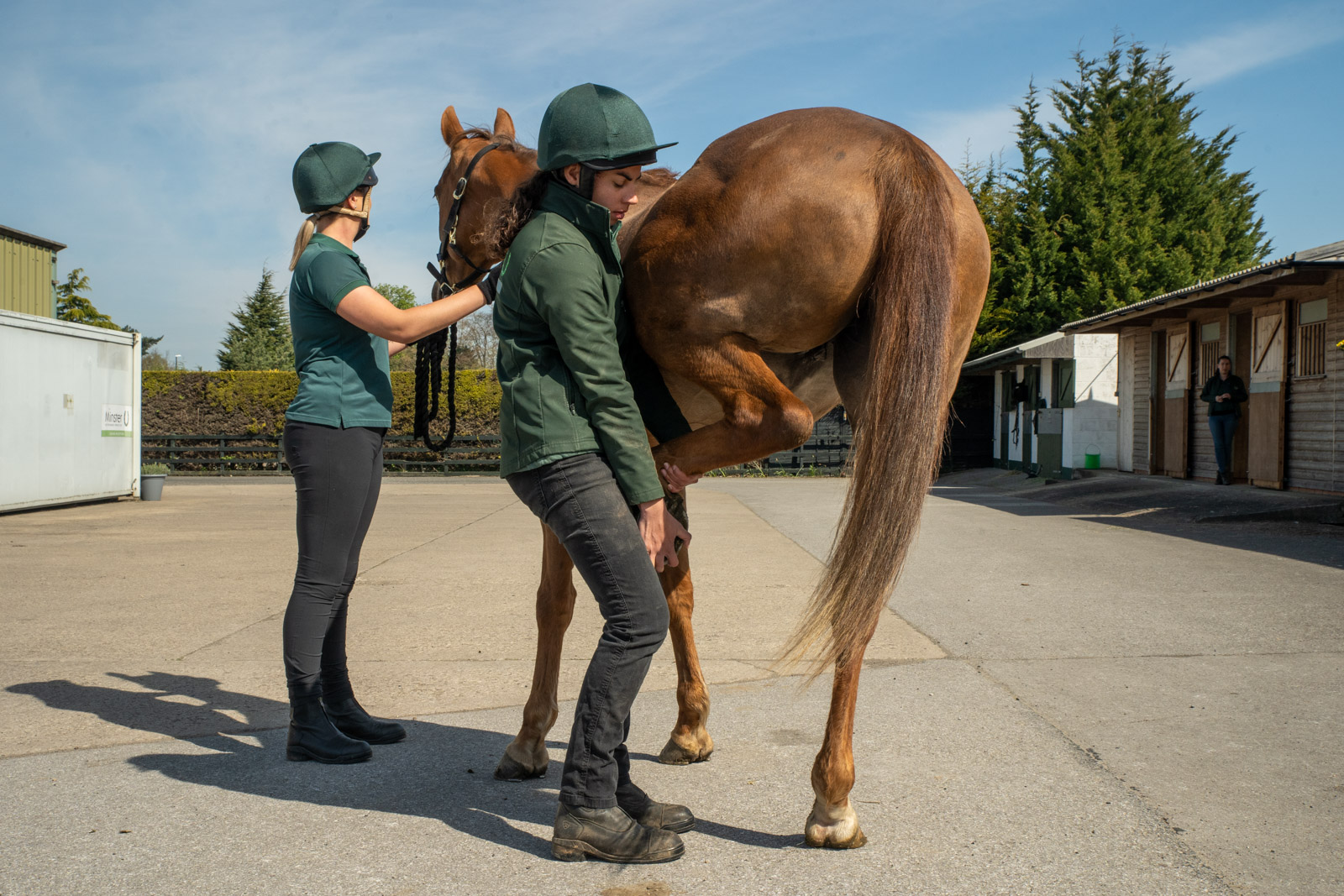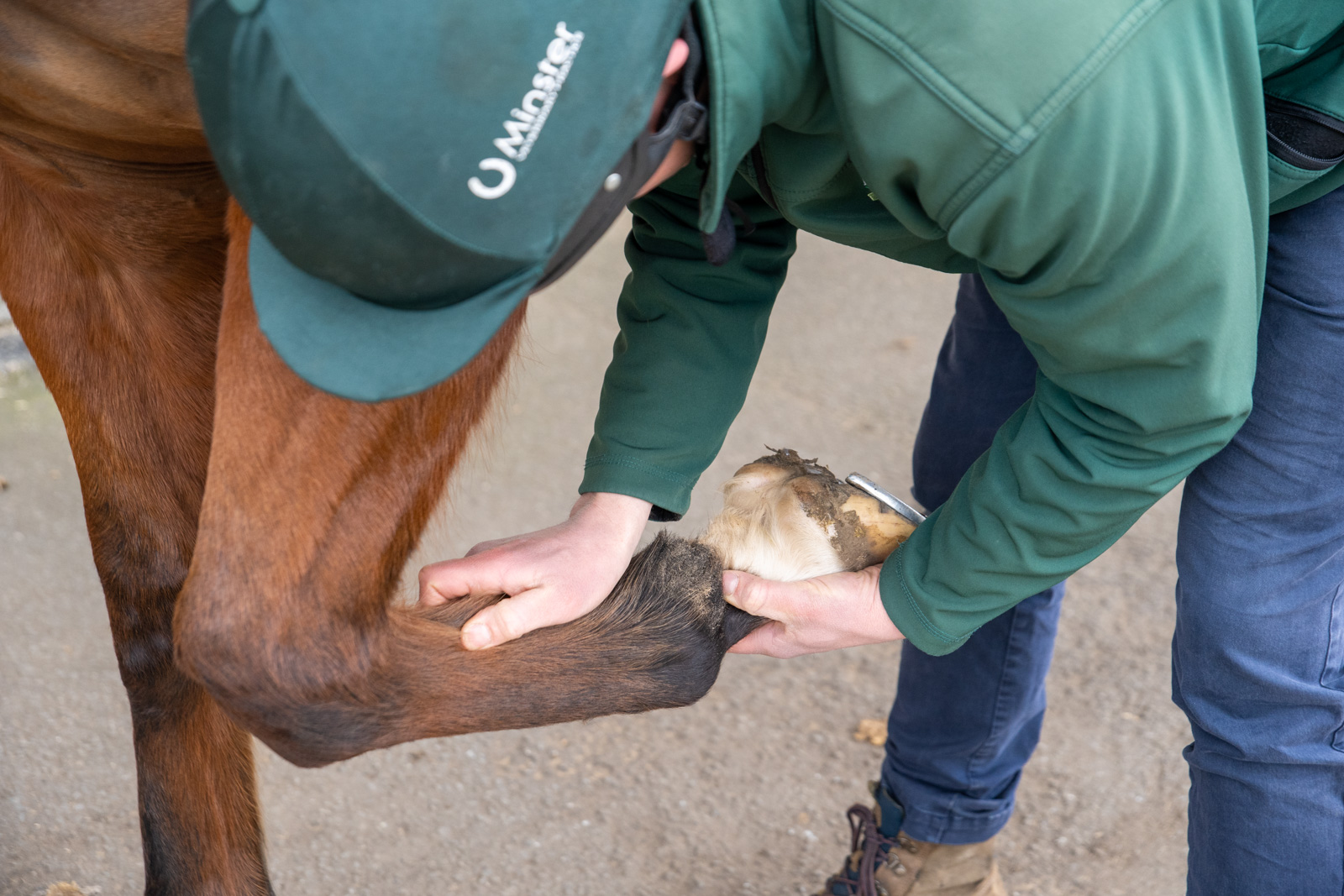Lameness & Poor Performance
Our clinic has a range of surfaces for gait assessment during lameness and poor performance investigations. These facilities enable us to carry out a thorough investigation to help get your horse back to full fitness as soon as possible.
Our vets can carry out lameness investigations and treatments both on the road and at the clinic. We have a full range of portable diagnostic equipment which means we can carry out X-Rays and ultrasounds at your yard for a timely diagnosis. Once a lameness has been diagnosed, there are several possible treatment options available such as shockwave therapy, stem-cell therapy, platelet rich plasma, IRAP and joint medications.
The diagnostic procedure has advanced significantly over recent decades but at long last newer, more strategic treatments are becoming available to bring the therapeutic options on a par with the sophisticated level of diagnostic information that can be achieved. The investigation process involves clinical examination, observation of gait and regional anaesthesia (nerve and joint blocks) to localise the lameness.
Our team of experienced clinicians use these nerve blocks strategically to desensitise regions of the limb and then re-assess the gait; desensitising the region affected will result in an improvement in the lameness. Once the affected area has been determined, a combination of radiography, ultrasonography, scintigraphy and sometimes arthroscopy can be used to achieve a diagnosis.
Armed with a diagnosis, treatment can be tailored to give the most appropriate therapy that gives to best chance for a successful outcome.
Have you ever found yourself saying ‘something about my horse just isn’t right’? The Equinosis Gait Analysis (EGA) can help. The EGA is a veterinary diagnostic system used to assess a horse’s gait. The system provides analysis that indicates whether the horse is lame or not, the severity of the lameness, which limb or limbs are involved and when peak pain is occurring during gait. Many lameness cases that we see are complex and involve subtle lamenesses or lameness involving many limbs. This system allows us to look at a subtle multi-limb lameness objectively using non-invasive and quickly mounted sensors. The gait analysis allows us to make more accurate diagnoses and monitor patient progress with higher precision. It can also detect sub-clinical lameness in high-level sport horses.
Does that mean my vet is not good enough to see if my horse is lame?
Not at all! The EGA is used as a complementary tool in combination with a thorough clinical examination. The EGA provides the veterinarian with an objective assessment of your horse’s movement. It’s like having a second opinion at every appointment!
In which cases can the EGA be used?
Multiple limb or compensatory lameness can further complicate what we see. EGA inertial sensors sample 10x faster than the human eye, allowing for detection of very subtle differences in symmetry between the right and left sides of your horse’s body.
Do I need to bring my horse into the clinic?
No. The EGA is completely portable and can be moved wherever it needs to. It can be very helpful for monitoring horses at your yard after treatment to objectively assess their recovery.
Does the horse’s size matter?
Yes, which is why the Equinosis Gait Analysis compensates for size programmatically. The EGA evaluates the overall torso movement to gauge the horse’s size and applies a correction factor. Even miniature horses can be accurately evaluated using EGA! Click here to read more about the Equinosis Gait Analysis (PDF).
Extracorporeal shock wave therapy (ESWT) is a non-invasive technology for treating musculoskeletal problems, soft-tissue injuries and bone injuries in horses. The shockwaves are created, emitted and directed onto the injured area. When the shockwaves meet interfaces of different impedance (i.e. bone/soft tissue interface) changes within the tissue are created. These include;
- An increase in blood flow
- Direct cellular effects
- Activation of osteogenic factors (the process of laying down new bone)
- A direct analgesic effect
Equine shockwave also restores mobility and promotes faster healing by stimulating bone growth, tissue regeneration and the release of endorphins, but the exact mechanisms of action are unknown. Numerous conditions have been treated in the horse, including:
- Insertional desmopathies e.g.
- Proximal suspensory desmitis
- Suspensory ligament branch injuries
- Avulsion fractures at the proximal attachment of the suspensory ligament
- Impinging dorsal spinous processes (DSPs)
- Bucked-shin complex
- Stress factures
- Osteoarthritis of the distal hock joints
- Superficial digital flexor tendonitis
- Angular limb deformity in young growing foals
- Treatment can be also useful in cases of chronic pain that is refractory to conventional treatment. Horses usually tolerate the procedure well although sedation is advisable and routinely performed to enable a thorough and accurate treatment as well as limiting any discomfort to the horse. Usually 1-3 treatments are administered at 1-2 weeks intervals. Horses are usually on box rest and controlled exercise during treatment.







